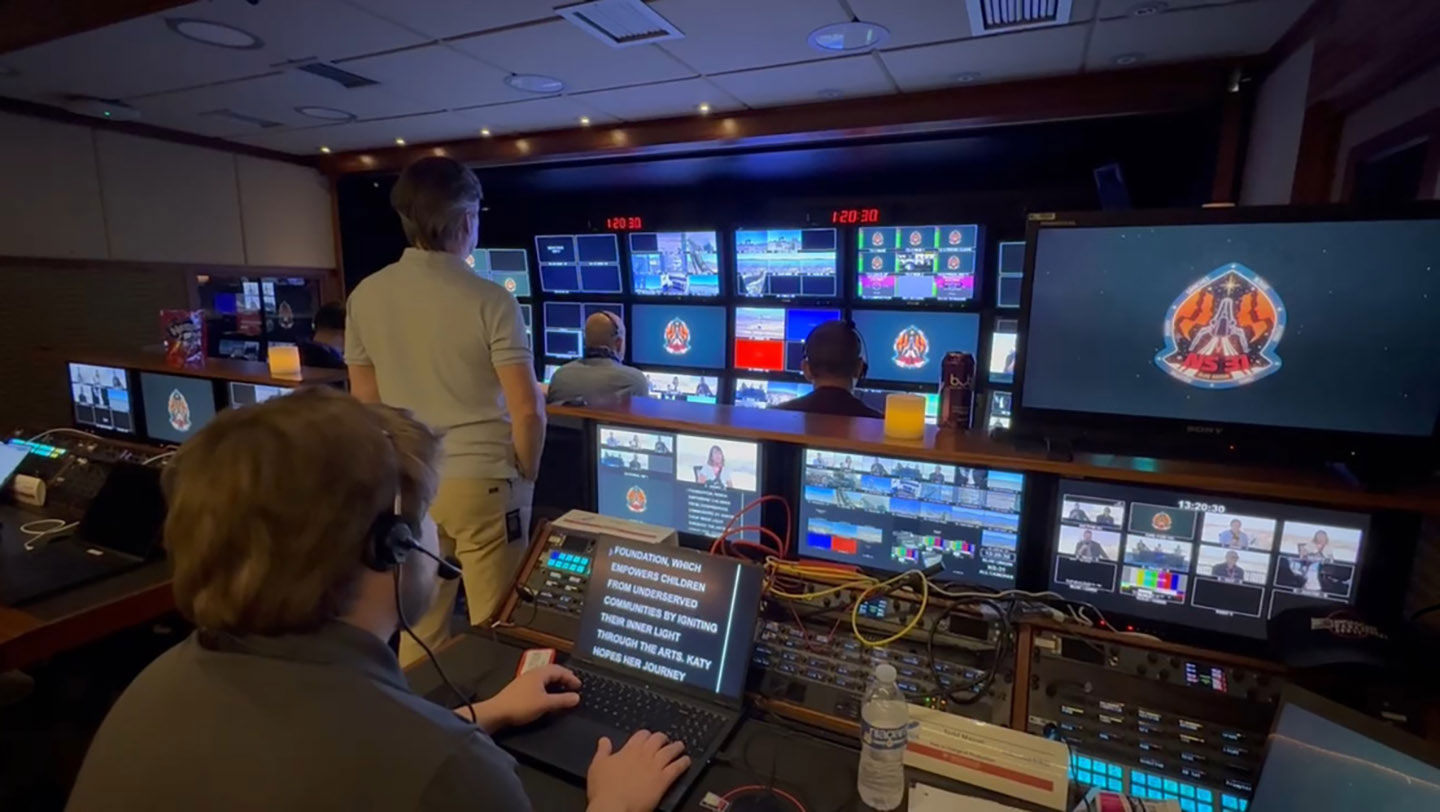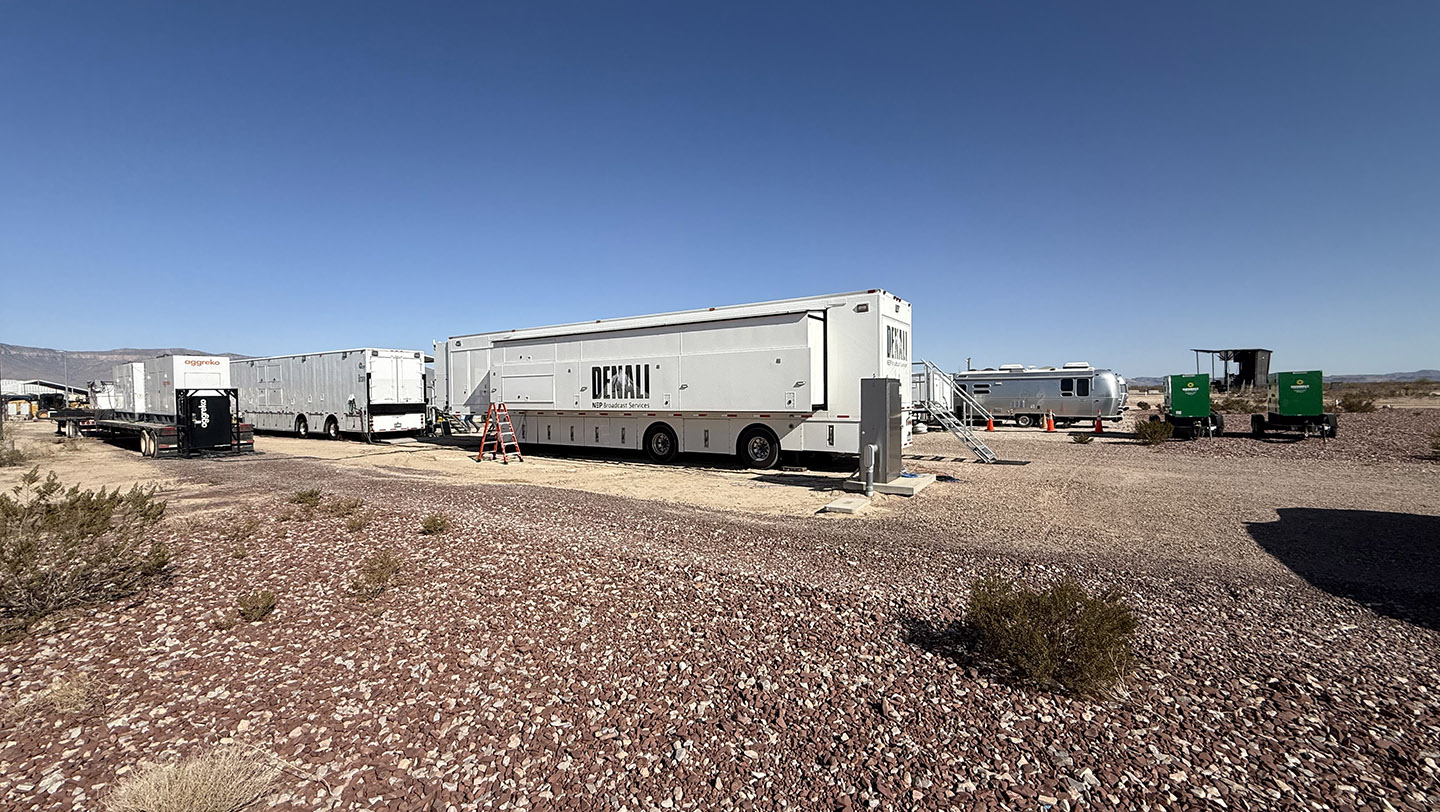Case Study: BMG builds live production from the ground up for historic Blue Origin launch

Subscribe to NCS for the latest news, project case studies and product announcements in broadcast technology, creative design and engineering delivered to your inbox.
In a remote stretch of West Texas, 30 miles from the nearest town, Blue Origin launched its NS-31 mission, the first crewed spaceflight featuring an all-women team. Behind the broadcast of the event, a 60-plus person crew from Broadcast Management Group (BMG) engineered a full-scale live production in just two weeks.
BMG was tasked with designing the infrastructure and executing live coverage of the pre-launch show, rocket launch, astronaut landing and post-launch press conference at Launch Site One near Van Horn, Texas.
“We’ve spent over 20 years producing large-scale, multi-camera live broadcasts, and the NS-31 mission brought all of that experience into play. We built a full video village onsite and delivered a seamless live show from one of the most remote locations we’ve worked in. It was a technically demanding production, and the team executed it to perfection,” said Todd Mason, CEO and founder of BMG.
Given the remote environment, one of the primary challenges was establishing a reliable broadcast infrastructure with full redundancy.
BMG deployed NEP’s Denali A, B and C mobile units to serve as the main production control center. These trucks, configured for high-bandwidth output and live switching, were supported with redundant power sources to avoid interruptions.

A mobile video village was constructed on-site to serve as the central hub, connected via a temporary fiber-optic network that linked the astronaut training facility, viewing platforms and other key production areas.
The communications backbone included systems from RTS, Riedel, Clear-Com and Unity to keep teams coordinated in real time across the sprawling launch facility.
The team utilized LiveU bonded cellular technology, supplemented by Starlink, to ensure a reliable stream for a global audience. This hybrid connectivity approach ensured signal stability across a site that lacked consistent wired internet.
For the visual coverage, BMG deployed 35 cameras, including:
- 6 drones for aerial footage
- 6 robotic cameras for remote and tracking views
- 6 tracking cameras
- 11 fixed-position cameras, including several Sony 4K PTZs
- Studio pedestals, ENG cameras, and a jib setup at the anchor desk

Footage from each source was integrated live, with switching handled onsite. BMG also managed lighting, staging and audio for the on-camera elements, including the pre-launch and press events.
Blue Origin’s NS-31 mission was a suborbital spaceflight conducted on April 14, 2025, as part of the company’s New Shepard program.
The 10-minute, 21-second flight carried an all-female crew of Aisha Bowe, Amanda Nguyen, Gayle King, Katy Perry, Kerianne Flynn and Lauren Sánchez. The mission marked the first all-women crew since Valentina Tereshkova’s solo flight in 1963.
Subscribe to NCS for the latest news, project case studies and product announcements in broadcast technology, creative design and engineering delivered to your inbox.




tags
Broadcast Drones, Broadcast Management Group, Clear-Com, drone, Gayle King, LiveU, NEP Group, PTZ, PTZ Cameras, Riedel Communications, RTS, Sony, Starlink Satellite, Todd Mason
categories
Broadcast Engineering, Case Study, Heroes